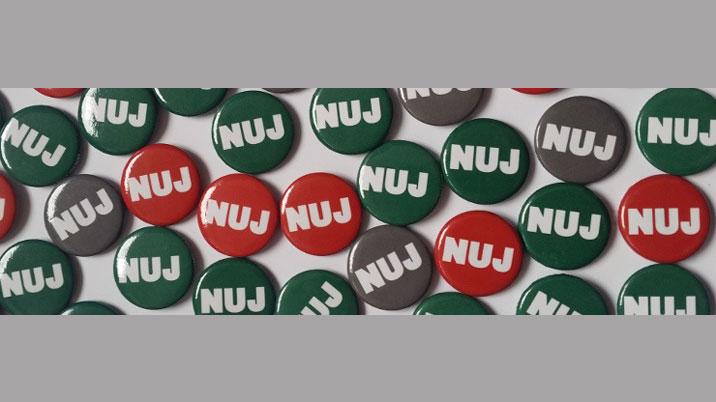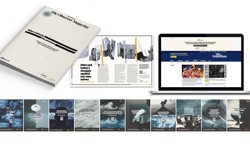
As reported by the National Union of Journalists: These figures are worse than had been predicted and worse than those for some other media groups (the median pay gap at The Guardian is 12.1 per cent; at the BBC 9.3 per cent; ITN 18.2 per cent; and Channel 4 24.2 per cent).
The median hourly gender pay gap for the FT’s 1,400 UK staff was 19.4 per cent and the mean was 24.4 per cent. The gender pay gap for bonuses was 28.3 per cent (median) and 37.9 per cent (mean). More than two-thirds of the most highly paid quartile of staff were men.
Together with company data provided in annual pay negotiations, these figures underline the fact that the gender gap for FT Editorial has increased over the past six years. In response, NUJ reps at the FT have launched their own pay survey and asked for urgent meetings with senior managers to discuss the data and to push for specific moves to close the pay gap and to address potential problems with equal pay. They have also asked for a study into the effect of high executive pay at the Financial Times.
According to the most recent figures from Companies House, in 2016 total annual remuneration for the then six male FT directors was £3.67m (profits that year were £6m), with the highest paid director getting £1.67m.
In a statement, Steve Bird, FoC at the FT chapel, said: "While we welcome the stated commitment to diversity, fairness and good business practice ... we would like to see this reinforced by specific deadlines and targets aiming to make the 19.4 per cent gap a thing of the past."
"On behalf of union reps at the media company, the FT report on gender pay refers to a 'goal of gender parity across the FT leadership by 2022' but no definition is given for "leadership" and no specific targets set for closing the pay gap. We believe this is a missed opportunity."
All companies with more than 250 employers must publish and report specific figures about their gender pay gap. The gender pay gap is the difference between the average earnings of men and women, expressed relative to men’s earnings. Employers must publish their gender pay gap data and a written statement on their public-facing website and report their data to government online, using the gender pay gap reporting service.
In its statement from John Ridding, FT chief executive officer, accompanying the figures, he said the newspaper, owned by Japanese media group Nikkei, had set a goal of gender parity for its global leadership team by 2022 and outlined a number of initiatives to improve workplace diversity, including 50/50 shortlists for all hiring and internal recruitment and a career development programme for women.
The primary reason given for gender pay gap was because the FT has "fewer women than men at senior levels" which reflected historic recruitment. The statement said: "On equal pay, we’ve done a thorough review and we are assured that employees are paid equally for the same or equivalent work. We would take any claim to the contrary seriously."
The union has also taken issue with an assertion by John Ridding, CEO, which appeared to blame collective bargaining agreements in editorial as contributing to the problem.
Laura Davison, NUJ national organiser, said: "Far from being a barrier, meaningful collective bargaining for transparent pay structures and progression backed up by good data, is the only real way to solve issues of gender or equal pay. For the chief executive to suggest it somehow prevents them from making progress is badly wrong and going down extremely poorly with staff.
"We will be asking for an urgent meeting with the company to discuss their results and the equal pay review they say they have carried out and look forward to a discussion about how we can address the clear issues which have been exposed by these gender pay figures."
In FT Specialist, a section of the business where journalists recently voted to move to collective bargaining, the NUJ campaign over gender pay combined with a progressive pay deal and targeted efforts by managers have helped to narrow the average gender pay gap among journalists there by a significant 1.8 percentage points - from 13 per cent to 11.2 per cent - in less than a year. The FT chapel said: "We believe that all measures designed to help early career journalists - the majority of whom are women - will also help to reduce the gender pay gap."
It said that as well as the welcome move by the FT to extend UK maternity leave terms to staff overseas and the commitment to broaden training and career development opportunities, the chapel believes that adopting the following measures would immediately improve the lives of women and parents:
- Equalised shared parental leave between men and women.
- A review of the salaries of all women returning from maternity leave.
- An annual increase in trainee starting salaries in line with inflation.
- Genuinely flexible and widely available work arrangements and measures to prevent daily workload impinging on domestic life.
The Economist Group has revealed a mean gender pay gap of 32.5 per cent, the highest of any media organisation declared so far. In its top quartile for pay there are 76 per cent men and 24 per cent women.












